Rahul Dubey
Explainability of CNN Based Classification Models for Acoustic Signal
Sep 10, 2025Abstract:Explainable Artificial Intelligence (XAI) has emerged as a critical tool for interpreting the predictions of complex deep learning models. While XAI has been increasingly applied in various domains within acoustics, its use in bioacoustics, which involves analyzing audio signals from living organisms, remains relatively underexplored. In this paper, we investigate the vocalizations of a bird species with strong geographic variation throughout its range in North America. Audio recordings were converted into spectrogram images and used to train a deep Convolutional Neural Network (CNN) for classification, achieving an accuracy of 94.8\%. To interpret the model's predictions, we applied both model-agnostic (LIME, SHAP) and model-specific (DeepLIFT, Grad-CAM) XAI techniques. These techniques produced different but complementary explanations, and when their explanations were considered together, they provided more complete and interpretable insights into the model's decision-making. This work highlights the importance of using a combination of XAI techniques to improve trust and interoperability, not only in broader acoustics signal analysis but also argues for broader applicability in different domain specific tasks.
VORRT-COLREGs: A Hybrid Velocity Obstacles and RRT Based COLREGs-Compliant Path Planner for Autonomous Surface Vessels
Sep 02, 2021



Abstract:This paper presents VORRT-COLREGs, a hybrid technique that combines velocity obstacles (VO) and rapidly-exploring random trees (RRT) to generate safe trajectories for autonomous surface vessels (ASVs) while following nautical rules of the road. RRT generates a set of way points and the velocity obstacles method ensures safe travel between way points. We also ensure that the actions of ASVs do not violate maritime collision guidelines. Earlier work has used RRT and VO separately to generate paths for ASVs. However, RRT does not handle highly dynamic situations well and and VO seems most suitable as a local path planner. Combining both approaches, VORRT-COLREGs is a global path planner that uses a joint forward simulation to ensure that generated paths remain valid and collision free as the situation changes. Experiments were conducted in different types of collision scenarios and with different numbers of ASVs. Results show that VORRT-COLREGS generated collision regulations (COLREGs) complaint paths in open ocean scenarios. Furthermore, VORRT-COLREGS successfully generated compliant paths within traffic separation schemes. These results show the applicability of our technique for generating paths for ASVs in different collision scenarios. To the best of our knowledge, this is the first work that combines velocity obstacles and RRT to produce safe and COLREGs complaint path for ASVs.
Evolutionary Multi-objective Optimization of Real-Time Strategy Micro
Mar 27, 2018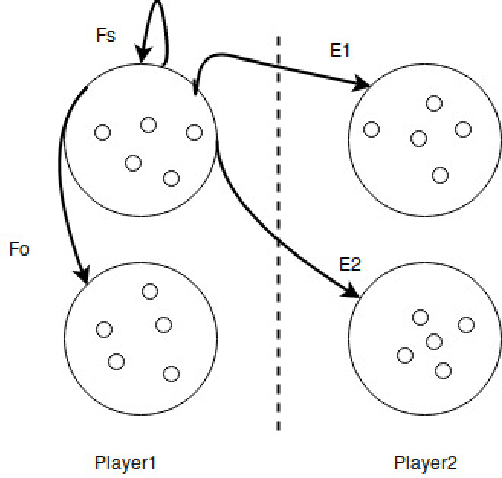

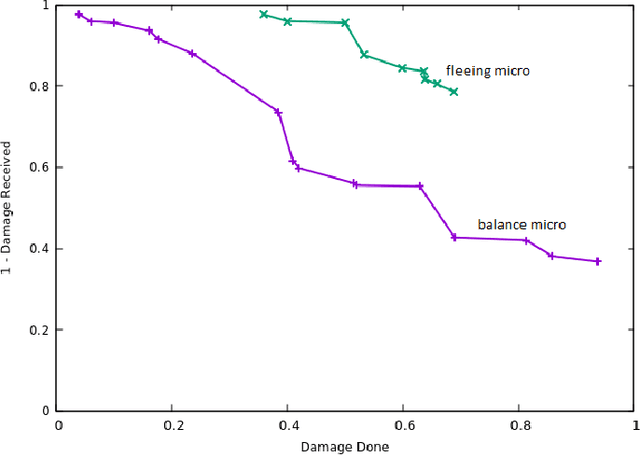
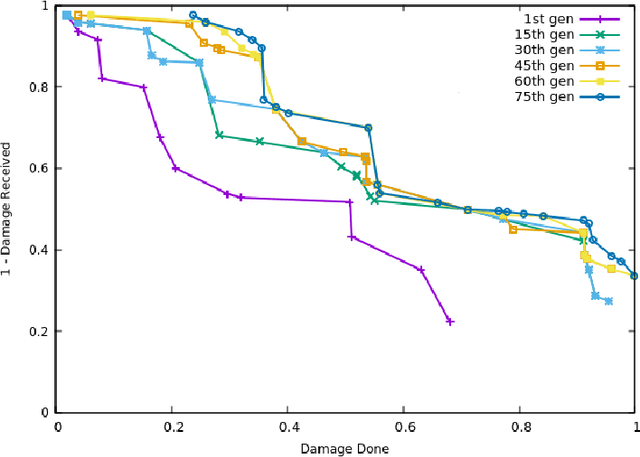
Abstract:We investigate an evolutionary multi-objective approach to good micro for real-time strategy games. Good micro helps a player win skirmishes and is one of the keys to developing better real-time strategy game play. In prior work, the same multi-objective approach of maximizing damage done while minimizing damage received was used to evolve micro for a group of ranged units versus a group of melee units. We extend this work to consider groups composed from two types of units. Specifically, this paper uses evolutionary multi-objective optimization to generate micro for one group composed from both ranged and melee units versus another group of ranged and melee units. Our micro behavior representation uses influence maps to represent enemy spatial information and potential fields generated from distance, health, and weapons cool down to guide unit movement. Experimental results indicate that our multi-objective approach leads to a Pareto front of diverse high-quality micro encapsulating multiple possible tactics. This range of micro provided by the Pareto front enables a human or AI player to trade-off among short term tactics that better suit the player's longer term strategy - for example, choosing to minimize friendly unit damage at the cost of only lightly damaging the enemy versus maximizing damage to the enemy units at the cost of increased damage to friendly units. We believe that our results indicate the usefulness of potential fields as a representation, and of evolutionary multi-objective optimization as an approach, for generating good micro.
Emotion Analysis of Songs Based on Lyrical and Audio Features
Jun 16, 2015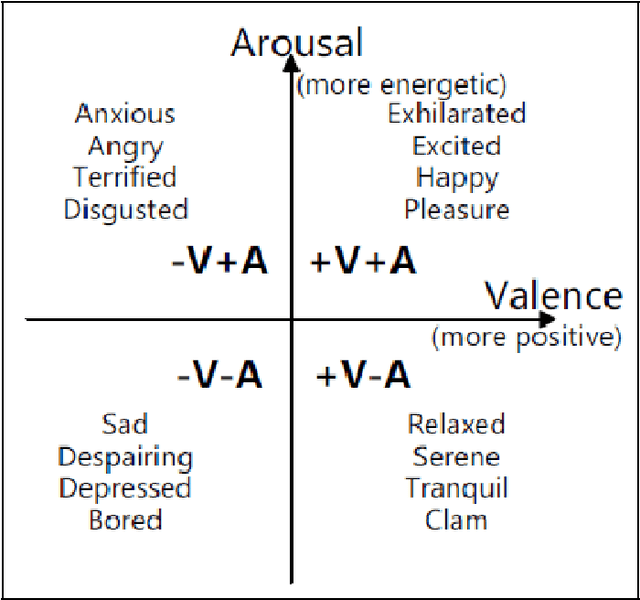
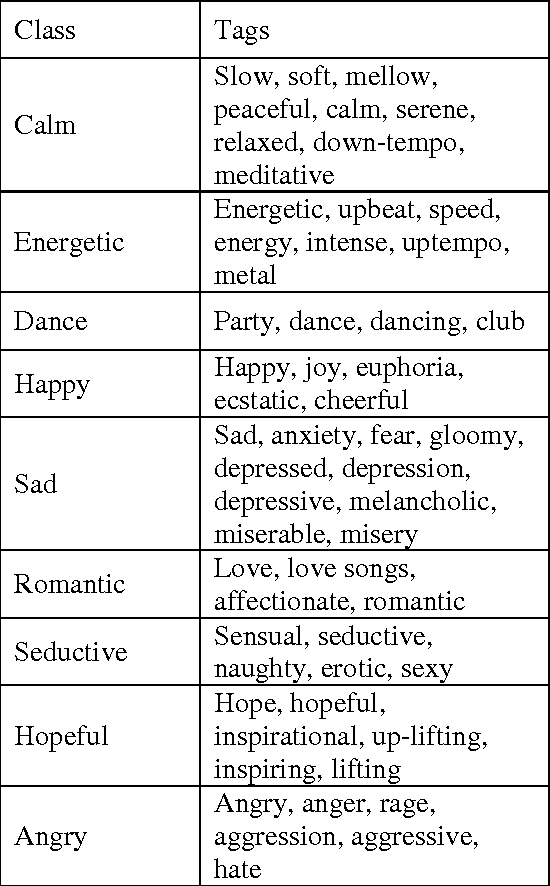
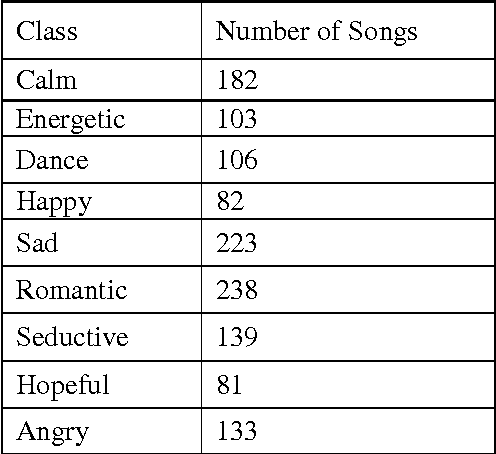
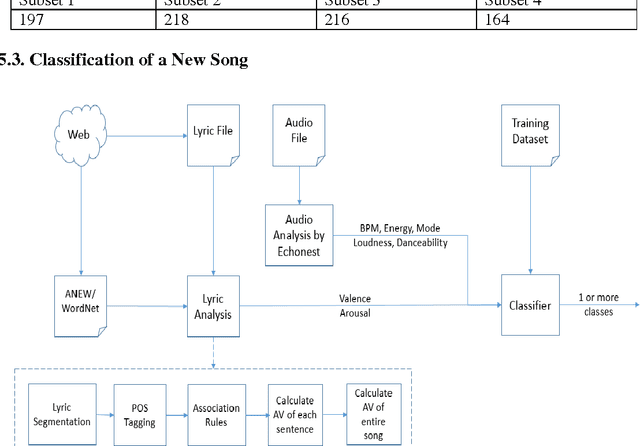
Abstract:In this paper, a method is proposed to detect the emotion of a song based on its lyrical and audio features. Lyrical features are generated by segmentation of lyrics during the process of data extraction. ANEW and WordNet knowledge is then incorporated to compute Valence and Arousal values. In addition to this, linguistic association rules are applied to ensure that the issue of ambiguity is properly addressed. Audio features are used to supplement the lyrical ones and include attributes like energy, tempo, and danceability. These features are extracted from The Echo Nest, a widely used music intelligence platform. Construction of training and test sets is done on the basis of social tags extracted from the last.fm website. The classification is done by applying feature weighting and stepwise threshold reduction on the k-Nearest Neighbors algorithm to provide fuzziness in the classification.
 Add to Chrome
Add to Chrome Add to Firefox
Add to Firefox Add to Edge
Add to Edge